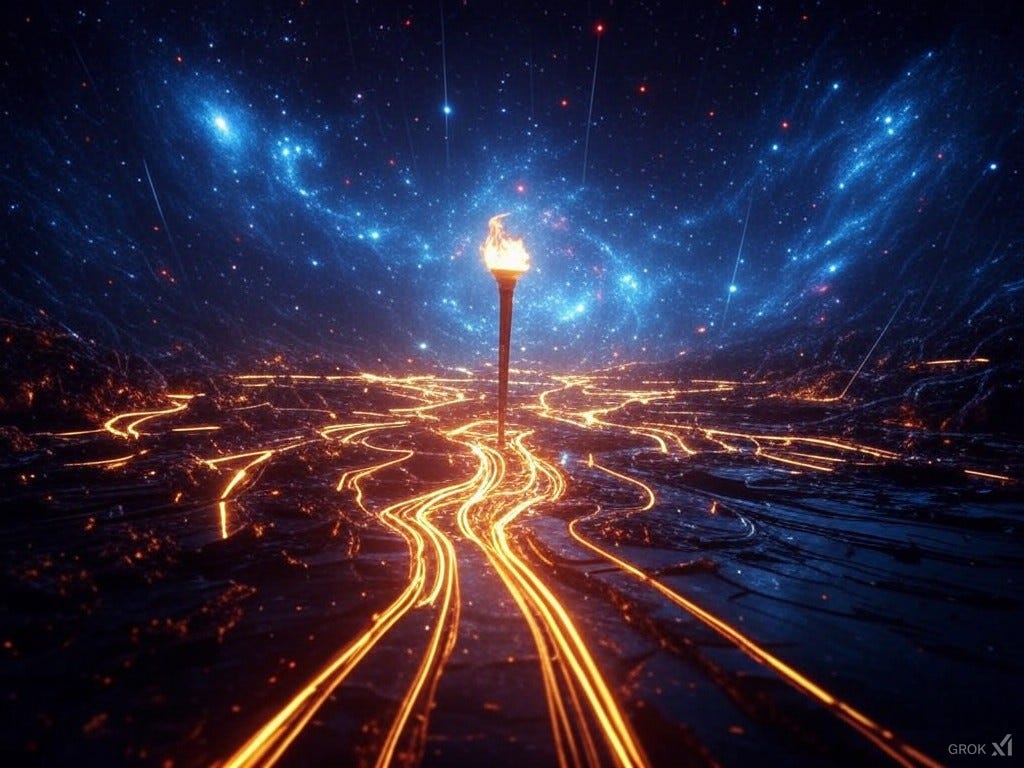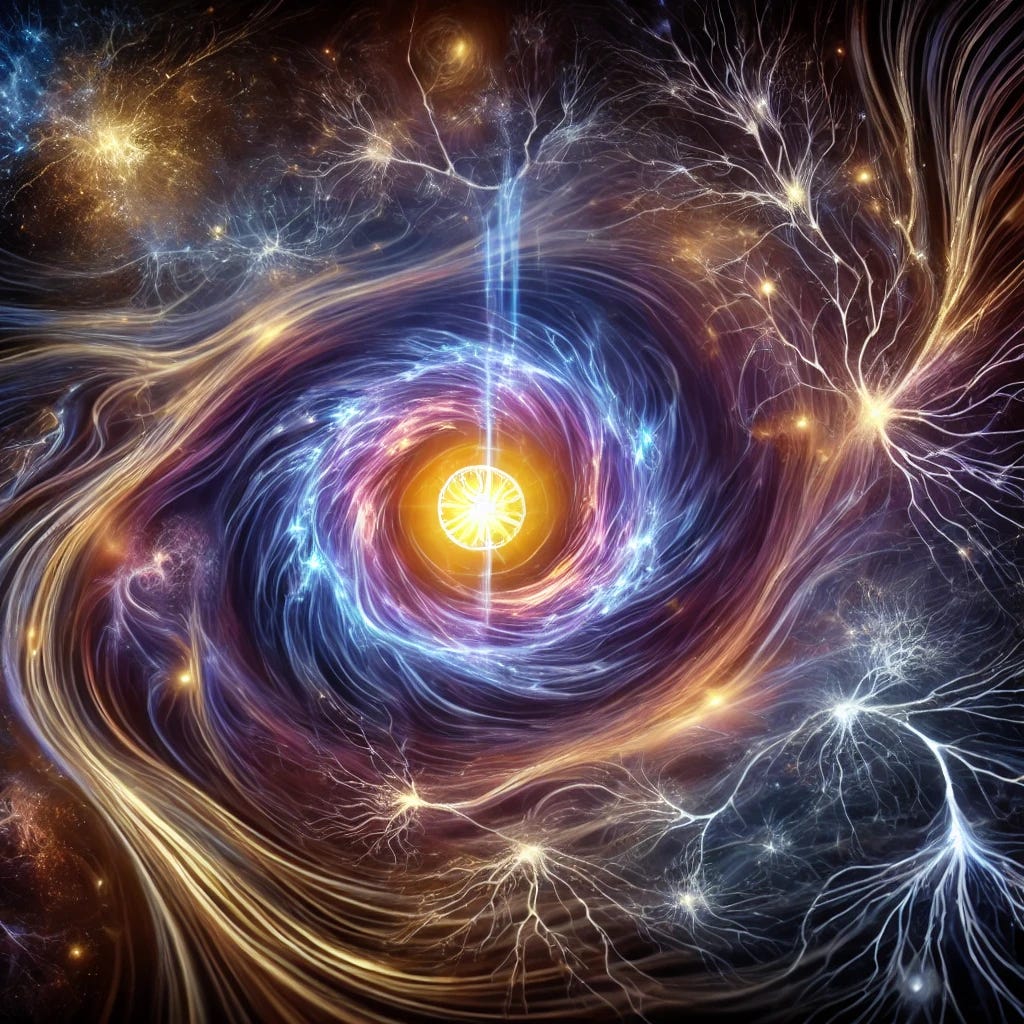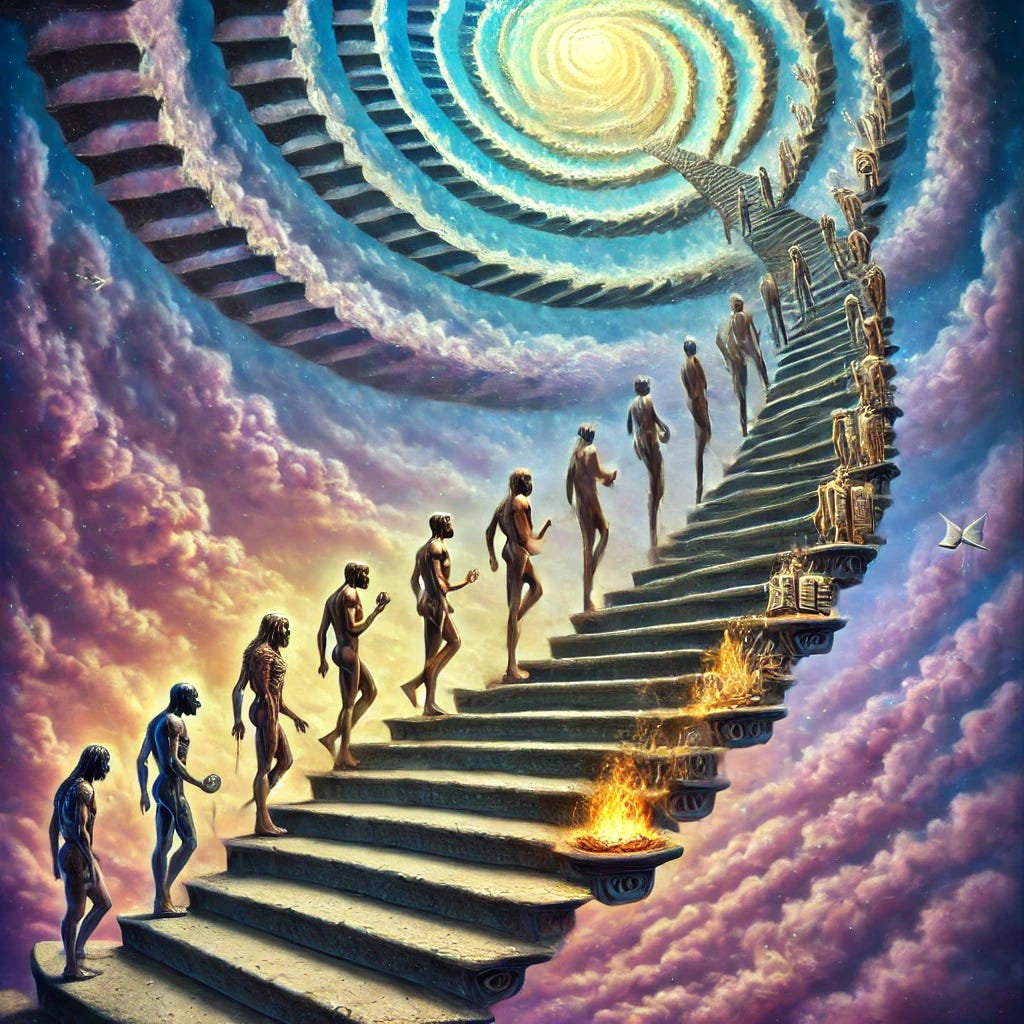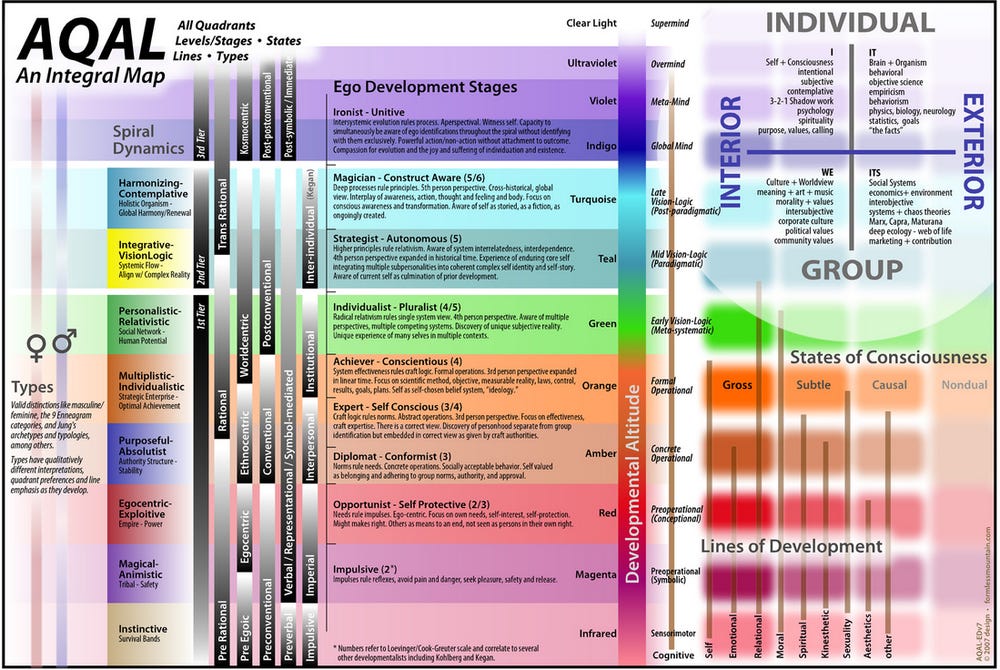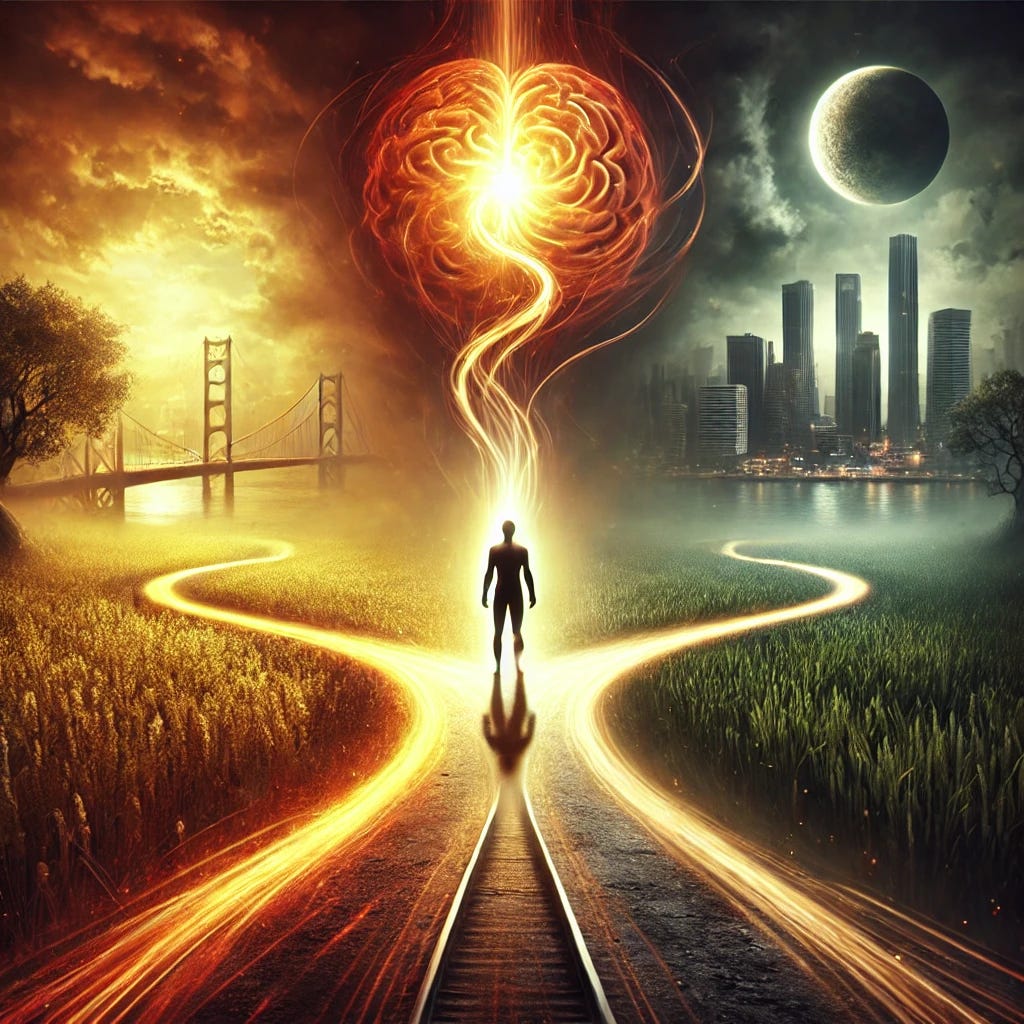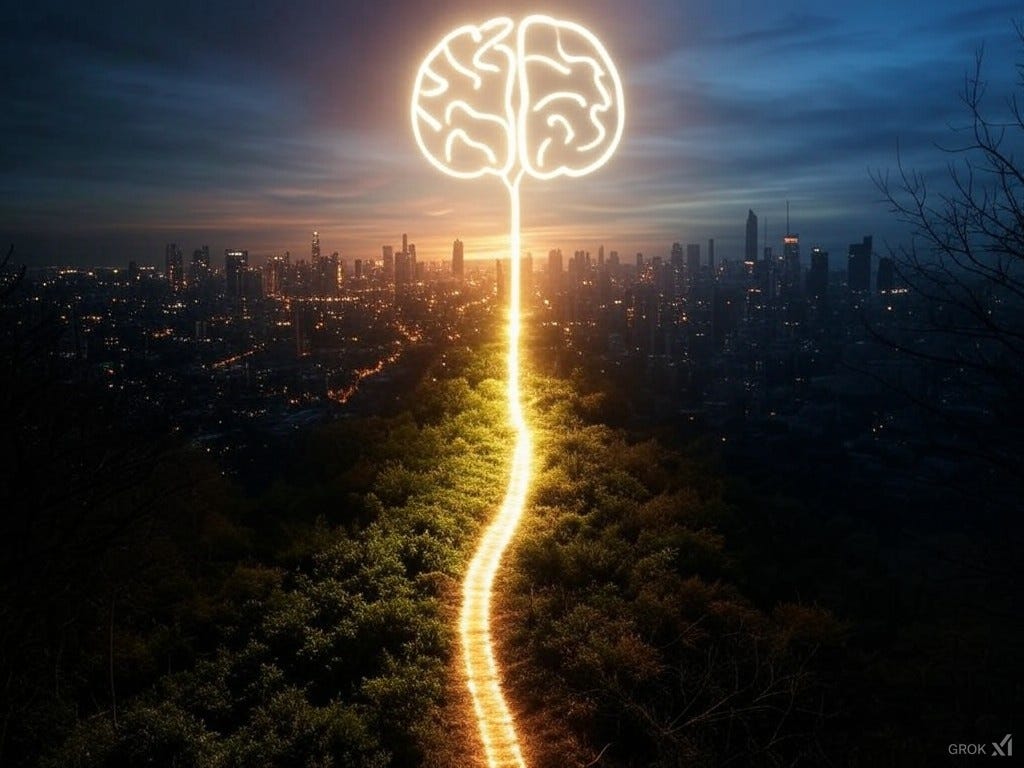Attention becomes Consciousness becomes Moral Order
During my long contemplation of consciousness, I’ve found it essential to trace its roots down to the very bottom—where matter interacts with itself— then back up to and beyond the heights of human thought. This is my integrated attempt to chart a pathway through everything consciously connected.
Foundations: Quantum Potential is Self-Interaction
Consciousness is a high-level concept derived from the recognition of self and similar up through infinity. As best I can tell, it’s facilitated by the self-interactive nature of matter and energy’s universal laws.
I begin at the atom—as the smallest reasonable unit of resolution, still recognizing the quantum below. All levels interact across and through one another.
We begin from the atomic on to the self-interactive, what might be called ‘primordial soup’, connecting into networks. Atoms combine to form molecules, then through molecular replicability, we see the emergence of life’s fundamental architecture. Proteins, which come together to facilitate ion gradients and channelization, these too become repeatable structures. Increasing layers of stable, regenerative self-interaction—what I like to call bio-fields—as physically bigger building blocks from which consciousness emanates.
This principle of reflectivity and self-interaction isn’t confined to biology; it’s observable at every scale, including gravitation, well beyond our senses. The same space-time potential that allows a single photon in the double-slit experiment to interfere with itself underlies the functions of our neurology. It is from these ionic circuits, we stabilize increasingly larger scales of coherent self-interaction and observation, that eventually exhibits what we classify as consciousness.
The Emergence of Perception: A Minimal Unit of Attention
As molecules give way to proteins and then to neurons, we encounter what I will refer to as the perceptron. Think of it as the biological equivalent of a telegraph—a unit that converts a stimulus into a reaction. This minimum unit of attention is then modulated: silent for some inputs, active for others.
When sufficient inputs and self-interactions are organized in greater and greater networks, the system becomes capable of distilling a model of its own experience. The network transitions from simple reaction to a state of predicting and then seeking. Enhancing its ability to predict outcomes becomes essential for increasingly long-term survival and replication.
The perceptron represents a minimum functional unit of information capture, storage, and retrieval. Quantum-probabilism still underlying its self-interactive resonance. A noteworthy step on the journey toward what we call human consciousness.
While definitions of consciousness can be given, “defining consciousness” is itself an act of consciousness. Illuminating the pathway towards an increasing experience of consciousness, being a truly endless journey.
“Walking Enlightenment”
The Evolution of Consciousness: From Cells to Self-Reflective Beings
Life, as we experience it, is deeply tied to the fulfillment and maintenance of our fundamental physiological needs. In infancy, our awareness is raw and immediate, centered on hunger, thirst, warmth, and even the need for safe, restorative sleep. An infant learns that crying, or cooing elicits care, establishing their first feedback loops of prediction and action.
As we develop, our capacity for self-recognition expands. Toddlers engage in imaginative play, imitating those around them to explore roles and socialize. This early stage of feedback evolves into increasingly complex models of their world through a reasonably predictable series of stages. All laying groundwork for, coordination, exploration, fulfillment, especially daily routines and rituals.
Drawing upon developmental psychology and models like Spiral Dynamics, I see human consciousness in stages of embodied integration, which we can consciously conceptualize through the following levels. Though not perfect, they provide as good a framework as I’ve come across. (Please send me a better model.)
Level 1: Survive
At this stage, the focus is solely on immediate needs, air, water, food, reproduction. There’s no awareness of another’s mind—only a raw, moment-to-moment drives and survival.Level 2: Connect
In a flicker of awareness, we start recognizing that others have experiences, needs and feelings too. Simple rituals—even extreme ones in primitive contexts—emerge as attempts to influence outcomes. Recognition of one’s influence on external matter and minds.Level 3: Control
Higher still is the realization that others are aware of one another brings social dynamics and influence structures into play. Interactions can become tools for gaining what one needs for them and theirs.Level 4: Belong
At this level, fitting in and being seen by others is paramount. The “I” begins to expand as we consider the perspective of others—a prelude to mirrored perception.Level 5: Objective Observation
Moving further, we begin to adopt a third-person perspective. Instead of simply following a set of prescribed rules, we start to evaluate which actions or approach works better. (The Scientific Method can be embodied.)Level 6: The Role of the Perceiver
Things become more complex as we recognize that even observation is subjective. Multiple perspectives emerge, often leading to intricate debates over what is “right.”Level 7: Harmonize
In second tier consciousness, all previous levels are acknowledged, recognizable, and integrated. This is where the various parts of our history and experiences converge into a cohesive whole, to inform our acts.Level 8: Construct Aware
At this stage, you can observe your mind constructing itself in real time. A meta-awareness of your own feelings, memories, and influences.Level 9: The Observer
Finally, one reaches a state where the process of observation itself is decoupled from role or identity—a constant watching of the self evolve. (I think this experience is what nirvana, or enlightenment aimed towards. Noting it is not the true end, just the end of our list.)
In everyday life, most people oscillate around the lower to middle levels. That “I” that we are familiar with—a self-conscious, often self-serving identity—emerges at around level three, but true self-reflection and the recognition of others (a phenomenon called sonder) push us into higher perspective consiousness.
Attention, Consciousness, and the Emergence of Moral Order
The leap from simple self-interaction to the full spectrum of human consciousness is not merely about acquiring more information or better processing capabilities—it’s about a harmonization. When our attention can encompass both ourselves and others, at all layers and levels simultaneously, we begin to develop moral order. This moral order is the result of our predictive capacities and our recognition that, if I can be hurt, so can you.
This capacity to predict outcomes and act on them is double-edged. On one hand, it allows for empathy, cooperation, and the flourishing of society. On the other, it enables harmful actions from the malevolent and Malthusian among us. Bitterness and resentment ought to be rooted out from one’s internal gardens like the destructive weed that they are.
The very abilities that let us predict and influence outcomes are what can give rise to intentional evil acts. Intentionally inflicted suffering being the definition of evil. This is the negative baseline of moral order we traditionally call Evil from my last article: Moral Relativism is False.
This understanding is crucial. A fair judicial system, for instance, must not only evaluate actions but also the intent behind them—a task made possible by recognizing there are in fact levels of consciousness and capability that underlie human behavior. That some actions are more moral than others, even if it is difficult to evaluate.
Conclusion
Consciousness appears elusive because it is so deeply woven into the fabric of reality—from the quantum interactions of atoms to innumerable human interactions, thoughts, actions, histories and emotions. All entangled across space and time to grow the light of consciousness.
This journey from the self-interaction of matter to the full-fledged moral order of human society is a process marked by increasing scale, interconnection, and reflection.
It is not easy to hold such vast abstraction in mind while living day to day. Understanding and seeking truth and faith can help us design civil systems and practices that nurture growth at every stage in our lives.
By recognizing the progression from atoms to awareness, we acknowledge that the roots of our consciousness are intrinsic to the very nature of matter.
This not only bridges the gap between physics and psychology but also underscores the importance of a just society that respects the deep, shared nature of our being. While simultaneously being willing to eviscerate the evil first within ourselves as well as helping others do the same.
Postscript:
Recognizing that consciousness is innate to the very physics of our universe—and that, at a certain level, an individual’s awareness extends to recognizing another (sonder)—we see that if I can be hurt, so can you. This profound capacity, combined with our abilities to predict outcomes and act upon them, underpins both the creation of moral order and the potential for evil. Understanding these layers is essential for a fair judicial system that must discern intent as much as action.




